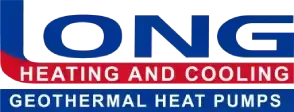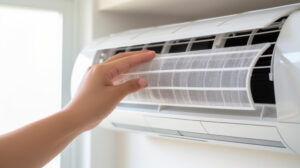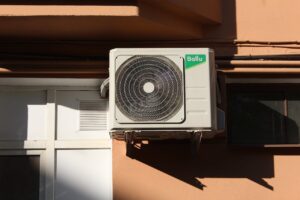Myths About Geothermal Energy
When conversations turn to geothermal systems, a lot of misinformation gets tossed about. Why do these myths about geothermal energy persist? Some of them might have held a kernel of truth in the technology’s early days, but thanks to modern advances, they are no longer accurate. Others are likely the result of misconceptions and misunderstandings. If you’re interested in capitalizing on the many advantages of geothermal energy, you’ll want to move beyond the myths and examine the facts.

Geothermal Basics
Every day, the sun bombards Earth with solar energy. Some of this energy is absorbed by plants and animals, some is collected by solar panels, but the bulk of it is soaked up by the ground. In fact, 48 percent of the sun’s energy is absorbed by the earth. The result is a shallow ground temperature that is fairly constant and perfect for tapping. Geothermal systems do just that by using fluid-filled pipes buried in the ground; they collect this energy and utilize it to heat and cool homes.
Breaking Down Myths About Geothermal Energy
Are you ready to debunk some of the common myths about geothermal energy? While these 10 misconceptions are often repeated, when you examine the facts, it’s easy to see that they simply aren’t true.
- Myth 1: Geothermal Energy Isn’t Really a Renewable Energy: Renewable energy is defined as any energy collected from natural sources that are not depleted when used. Solar, wind, tidal, and geothermal energies all qualify. Geothermal systems do use some electricity, but they only require a very small amount; the bulk of the system’s energy is drawn from the ground.
- Myth 2: Geothermal Systems Don’t Work 24/7: Geothermal systems rely on a fairly constant ground temperature, and that doesn’t change when the sun sets. Because the ground temperatures tend to remain stable, geothermal energy is constantly available.
- Myth 3: Geothermal Systems Only Work in Certain Areas: Conventional heating, ventilation, and air conditioning systems can struggle to work effectively in colder climates because they are vulnerable to fluctuations in air temperature. Geothermal systems are different because they rely on ground temperature. While shallow ground temperatures may range from 45 degrees to 70 degrees depending on the location, the local temperature tends to be stable, which means geothermal energy can be successfully harvested from just about anywhere.
- Myth 4: Geothermal Systems Require Too Much Room: Since installing a geothermal system requires burying pipes in the ground, many people mistakenly believe that a lot of real estate is required. It’s not. Thanks to clever configurations and the use of vertical loops that are sunk deep into the earth, even small yards can provide sufficient space for a geothermal system.
- Myth 5: Geothermal Systems Only Produce Heat: A geothermal system can both heat and cool a home. In the winter, the system draws heat from the ground and sends it into the home. In the summer, the cycle reverses; the system pulls heat out of the home and stores it in the ground.
- Myth 6: Geothermal Systems Use Too Much Water: Geothermal systems use water, but they don’t consume it. The same water is continually cycled through the system, so there’s no need to replenish it with additional water.
- Myth 7: Geothermal Systems Cannot Produce Enough Energy: Some people think that if you want enough energy from a single heating and cooling system to have hot water, a toasty home, and a heated pool, then you’ll need to look elsewhere because geothermal cannot fully meet that kind of demand. They’re wrong. While you will need to choose an appropriate system, geothermal systems can be engineered to successfully produce enough energy to handle multiple loads.
- Myth 8: Geothermal Systems Are Loud: Geothermal systems don’t require the same components that traditional HVAC systems do. Because of that, they’re actually quieter than most HVAC equipment.
- Myth 9: Geothermal Systems Won’t Work for Older Homes: The age of the home is irrelevant. Geothermal systems can be used to heat and cool everything from new construction to historic homes.
- Myth 10: Geothermal Systems Require Complicated Maintenance: While all mechanical systems eventually require some maintenance, geothermal systems generally have fewer components than traditional HVAC systems, so there are fewer parts that can break down or require replacement. As a result, geothermal systems are very reliable and actually tend to require less maintenance than many other kinds of heating and cooling systems.
Don’t let myths about geothermal energy stop you from investigating these effective heating and cooling systems. If you have questions about geothermal systems, reach out to Long Heating and Cooling. As experts in heating and cooling, we’re ready to provide the answers that you need to make an educated decision about the system that best suits your needs. To learn more about geothermal systems, contact us online or call us at (888) 584-8138.







